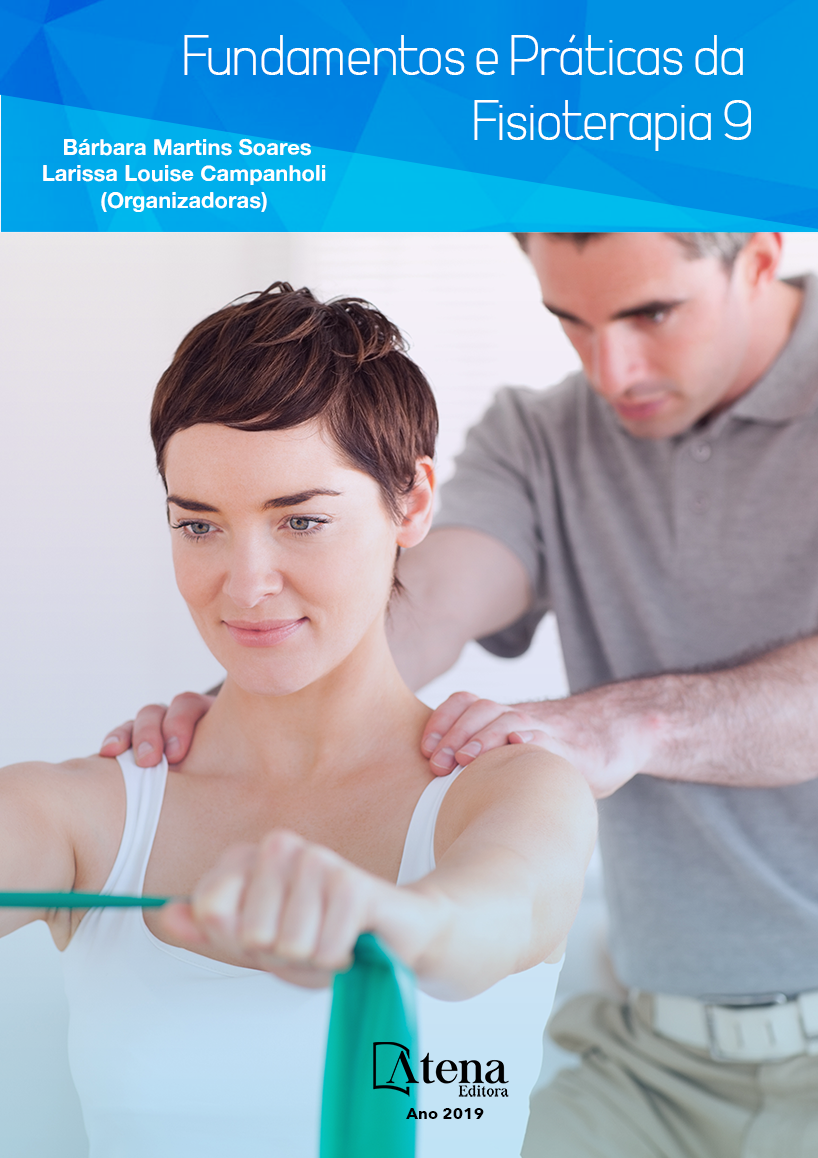
DISFUNÇÕES CARDIORRESPIRATÓRIAS EM PACIENTES PORTADORES DE DISTROFIA MUSCULAR DE BECKER ASSISTIDOS EM UMA CLÍNICA-ESCOLA NO MUNICÍPIO DE CAMPINA GRANDE-PB
a)Objetivos: analisar as principais
alterações cardiorrespiratórias em indivíduos
diagnosticados pela Distrofia Muscular de
Becker ao longo de 6 anos de assistência
ambulatorial; b)Métodos: realizada consulta de
prontuários de dois pacientes irmãos, atendidos
na clínica escola de fisioterapia da UEPB desde
Fevereiro de 2013 a Junho de 2018, incluindo
dados pessoais e clínicos, exame físico,
teste de força muscular respiratória (Pimáx e
Pemáx), pico de fluxo expiratório e cirtometria
torácica. Foram comparados os resultados
dos anos de 2013 e 2018. Os dados foram
tabelados e organizados. para serem expostos
como relato de caso; c)Resultados: cirtometria
torácica de ambos modificou pouco ao longo
dos anos. Paciente 1 teve PiMáx de -60cmH2O
em 2013 e -120cmH2O em 2018, PeMáx
passou de 76cmH2O para 88cmH2O e o pico
de Fluxo Expiratório de 450L/min para 420L/
min. Paciente 2 teve PiMáx de -62cmH2O em
2013 e -56cmH20 em 2018, PeMáx passou
de 62cmH2O para 56cmH2O; Pico de Fluxo
expiratório mudou de 350L/min para 265L/min.
Tratamento fisioterapêutico trouxe benefícios
quanto a estados gerais, perfusão tissular,
padrão respiratório; d)Conclusão: valores de
cirtometria torácica foram pouco modificados.
Já Pimáx, Pemáx e Pico de fluxo expiratório
tiveram alterações positivas no paciente 1 e
alterações negativas no paciente 2. Porém,
a fisioterapia cardiorrespiratória realizada
nesses pacientes contribuiu para a melhora da
qualidade de vida ao longo dos anos, prevenindo
afecções do trato respiratório, ajudando na
reeducação funcional respiratória, aumentando
e qualificando a sobrevida desses pacientes.
DISFUNÇÕES CARDIORRESPIRATÓRIAS EM PACIENTES PORTADORES DE DISTROFIA MUSCULAR DE BECKER ASSISTIDOS EM UMA CLÍNICA-ESCOLA NO MUNICÍPIO DE CAMPINA GRANDE-PB
-
DOI: 10.22533/at.ed.56519070311
-
Palavras-chave: distrofias musculares, reabilitação, força muscular
-
Keywords: muscular dystrophies, rehabilitation, muscular strength
-
Abstract:
a) Objectives: to analyze the main cardiorespiratory alterations in
individuals diagnosed by Becker muscular dystrophy during 6 years of outpatient care;
b) Methods: Two patients were consulted at the clinic physiotherapy school of the
UEPB from February 2013 to June 2018, including personal and clinical data, physical
examination, respiratory muscle strength test (Pimax and Pemáx), peak of expiratory
flow and thoracic cirtometry. The results of the years 2013 and 2018 were compared.
The data were tabulated and organized. to be exposed as a case report; c) Results:
thoracic cirtometry of both has changed little over the years. Patient 1 had PiMax of
-60cmH2O in 2013 and -120cmH2O in 2018, PeMax increased from 76cmH2O to
88cmH2O and the peak of Expiratory Flow from 450L / min to 420L / min. Patient 2 had
PiMax of -62cmH2O in 2013 and -56cmH20 in 2018, PeMax rose from 62cmH2O to
56cmH2O; Peak expiratory flow changed from 350L / min to 265L / min. Physiotherapy
treatment brought benefits in general states, tissue perfusion, respiratory pattern; d)
Conclusion: values of thoracic cirtometry were little modified. Pimáx, Pemáx, and peak
expiratory flow had positive changes in patient 1 and negative changes in patient 2.
However, cardiorespiratory physiotherapy performed in these patients contributed to
the improvement of quality of life over the years, preventing respiratory tract affections,
helping in functional respiratory reeducation, increasing and qualifying the survival of
these patients.
-
Número de páginas: 15
- Anita Almeida Gonzaga
- Isabella Pinheiro de Farias Bispo
- Maria Angélica Alves Zeferino
- Mayara Silva Barbosa
- Anna Cristina da Silva Santos


